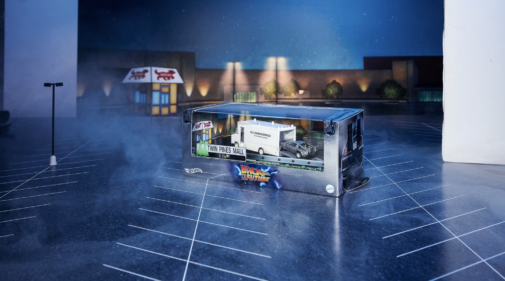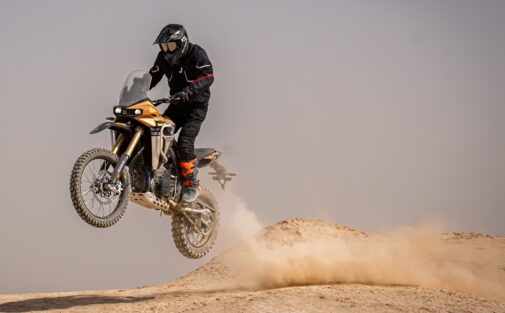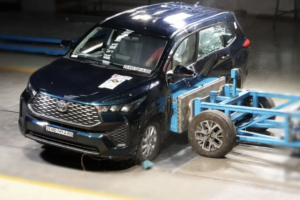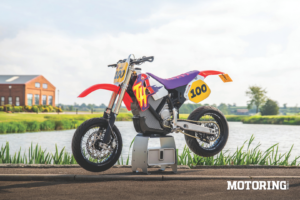Adventure (noun): an experience or event that is very unusual, exciting or dangerous.
Funny how the words used to describe the term pretty much sum up the motorcycling way of life, right? However, this word is reserved for those special few motorcycles that are built to take you away from your mundane life to places where not many dare wander. The newest ones to grace our lands are the Royal Enfield Himalayan and the Triumph Scrambler 400 X; both of them are designed to do just that but in different ways. After all, one’s an adventure tourer and the other is… erm, a scrambler. Yet everyone, including me, is on the fence about which one to choose between the two.
Perhaps it has got to do with the term that Indians just love throwing around — value for money. It’s ` 2.85 lakh for the Himalayan vs ` 2.63 lakh for the Scrambler. It’s 21/17-inch wire-spoke wheels vs a 19/17-inch alloy setup. It’s tubed tyres vs tubeless. It’s a TFT console vs an LCD one. It’s ride modes vs traction control. It is 452cc vs 398.15cc. It is not that simple, and when you experience them back-to-back, it becomes… more complicated.
My plan was simple. Take the two bikes on an adventure that would take us through the serene Konkan coastline and ride them through all possible terrains to figure out which one of them could take a place in my garage. At the crack of dawn, the two bikes met, and while we had our morning dose of caffeine, figuring out the route, I couldn’t help but first up was the rocky terrain that required the bikes to crawl through. And that’s where the lightness of the Triumph and all its low-end grunt, well, triumphed over the heaviness of the Himalayan. The Scrambler, with its 53.85cc handicap, feels more lively at low speeds. It can crawl through technical trails quite easily. It’s not that the Himalayan can’t. But the Royal Enfield, even though it has a decent low-end grunt, is not as tractable as the Triumph. This means you’ll have to be in the right gear all throughout while navigating your way through tricky stuff, and keeping the 196 kg heavyweight right-side up.
But as I progressed to some fast trails with loose sand, the picture changed. Standing up and riding the Himalayan feels so natural that anything that gets in the way — pebbles, tree barks, sand ditches, can be easily avoided. Even if I missed something, the suspension would just soak it and didn’t let me bear the brunt. But the part that I loved a lot was that with two presses of a button on the right switchgear the ABS was off at the rear wheel, and of course, it doesn’t have traction control, so one less thing to worry about. Meanwhile, on the Scrambler, I had to bend to have total control and notice the attention both the bikes garnered. Yes, the Royal Enfield Himalayan is a big bike, and it stood tall in the sea of commuters, or maybe it was the gold-painted wheels and the livery that demanded a second, even a third glance. But the Triumph? Even with its stealthy khaki green paint, it was turning heads and bringing smiles to the faces of children headed for school.
Soon after we started, we encountered our first set of winding roads with near-perfect tarmac. On the Scrambler, I felt like a hooligan. The handlebar is wide and tall, but close enough for me to have a commanding grip, the tank pads for me to hold the bike, and footpegs that are slightly rear-set aid spirited riding. And boy, I was shooting through corners. The 19-inch front wheel made turning effortless. Naked-like lean angles? No problem. Swift direction changes? Without breaking a sweat.
I was almost convinced that the Himalayan wouldn’t be up for such ‘adventures’, but I couldn’t have been more wrong. First, I went from the 825 mm seat height that has a more ‘in the bike’ feeling to the 845 mm setting for the ‘on the bike’ experience. This meant I had more leverage to hustle the bike through corners. Yes, it is 10 kg heavier and has a 92 mm longer wheelbase, and plus with that 21-inch front, it was not going to be as effortless as the Triumph, but the Himalayan has some serious gymnast-like abilities for its size. Not only could I do some serious lean angles, but even switching directions didn’t require a lot of effort. In fact, considering the manoeuvrability and feedback from the front tyre, it almost feels like a 19-inch wheel.
And this had me tempted to take the bikes for some dirty dancing on the bike, and while it was fun over short stretches, on long trails it gave me an aching back. The suspension on the Scrambler takes care of most of the rocks and potholes, but it has its limit. The quick rebound rate and the limited suspension travel are quick to remind us that this bike is not meant for serious off-roading. And yes, before starting off, I had to keep the menu button pressed for a few seconds to get the ABS at the rear wheel along with the traction control to turn off. Thankfully, both these bikes have made it easy to disengage their electronic nannies.
I am not someone who prefers mobile phone-beating features on their instrument console, but come on, the Himalayan unit is better. The TFT screen is bright and crisp and the information is laid out pretty smoothly. There’s a host of ride-related data and even navigation on offer, although I couldn’t get the latter to work despite numerous attempts.
Meanwhile, the Triumph’s console isn’t bad, either. There’s something beautiful about the needles sprinting to the redline…but not on the Scrambler. For reasons unknown, the analogue dial is used for the speedometer while the tachometer is cramped into the digital part unlike the older Street Triples and Daytona 675. But yes, it does its job well and with no fancy features, there’s nothing to go wrong with.
Doing trails and venturing into the unknown is one thing and getting there is one. And that’s where the big difference between the two is. The Himalayan is a proper mile-muncher with its comfy egos and roomy seat. The Sherpa engine is great for the highways, enabling you to maintain triple-digit speeds with ease. However, the issue at those speeds is the refinement. Past 5000 rpm, the bike feels buzzy at the handlebar and the seat. And the complicated headlight mounting structure too makes an irritating noise, thanks to the bunch of screws that keep it together. For me, keeping it at 95 kph to 100 kph worked the best for long durations.
Similar is the case with the Triumph. It is quick-revving and can do speeds north of 150 kph, but you wouldn’t want to. The engine is shouty past the 120 kph mark and it’s vibey, too. Though I occasionally took it over 120, I found the bike and myself the most relaxed at 90 kph. That’s the sweet spot. No vibrations, the engine’s not screaming, and more importantly, less windblast. Plus, the soft initial bite of the Scrambler’s brake kept me from pushing it hard. In fact, though the Himalayan’s brakes are good, but not great, in comparison to the Triumph they feel far superior.
After the long ride, my Himalayan vs Scrambler conundrum still hadn’t concluded. Now, it was speed and (relatively) precise tarmac mannerisms vs comfortable mile munching and good off-roading characteristics. But the speed and mile-munching come at the price of refinement and the off-roading abilities are limited by the hardware on the Scrambler and the weight on the Royal Enfield Himalayan. Should I be even comparing them? I guess so, because perhaps, I am not looking for value for money, but versatility. And even though both of them come close to the words that describe ‘adventure’, they somewhere come up short. Maybe, just maybe, the Adventure from Mattighofen is the unusual, exciting or dangerous experience I am yearning for.





























